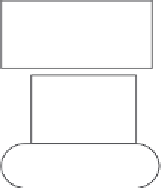Biomedical Engineering Reference
In-Depth Information
Need from Fig 4.1
Appoint lead
Review DHF: ensure it is up-to-date
and complete.
Ensure all approvals are signed off
Open existing
Design History File
(Design File)
Clarification
Product specification
no
yes
Conceptual
design
Detailed
design
Evaluation
Release
Approved?
no
Embodiment
Prototype
Prototype
Approved?
yes
yes
yes
yes
Fully document change
Approved?
Approved?
Approved?
Old documents in
repository
no
no
no
Decide where feedback applies
Figure 4.7
Design change procedure.
It should come as no surprise that a design change is similar to a full new product design.
There are, however, two main differences. The first is that this procedure will always
relate to an existing design file, hence the first step is to open an existing file. What
follows is the same. All that has been described before still applies. More often than not,
it is a small change that causes a company a lot of grief. So do not fall into the trap of
thinking that this procedure is only about documentation - it is about making a change
properly. Hence, having adopted the change, make sure you assess the risks associated
with said change. Finally, the end of the procedure is different; here one ensures that the
change (or changes) is fully documented in the file and the old documents are stored in a
repository (
Figure 4.7
).
It is important to note that some design changes can be monitored internally; for others you
will be obliged to inform the regulatory bodies. We will be looking at this in more detail later.
































































Search WWH ::

Custom Search